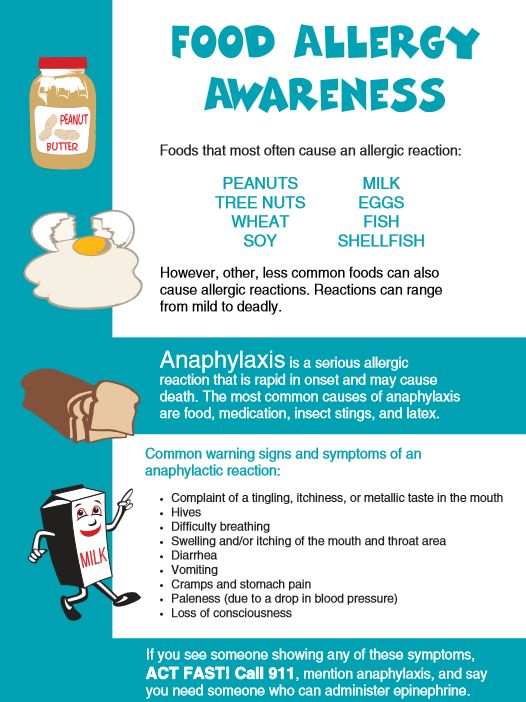In honor of Food Allergy Awareness Week, May 11-17, 2014, I thought I’d pull together some food allergy facts and how you can better prepare your restaurant for food allergen customers.
First, I think I’ll start with my own story on food allergies. My youngest son has a severe allergy to tree nuts, pistachios and cashews specifically, but we stay away from all nuts because we’ve experienced the unfortunate of him going into anaphylactic shock.
We were at our favorite summer place to grab a quick snack and take a scroll down the Grand Lake beach. At this time, we knew that my son had an allergen to tree nuts, but he was fine with peanuts, so when my mother ordered herself an ice cream sundae with peanuts, she double checked with the counter attendant that there was indeed no tree nuts in those peanuts. The girl confirmed, and we set off for our stroll down the beach. At one point my little one wanted to taste Grandma’s ice cream, and she obliged. Within seconds of him swallowing down a spoonful of that ice cream, his throat started to close. We were miles away from the hospital, but had our Epipen Junior on us. We gave him a full dose and began our way to the hospital. Before the shot, he was gasping for air, and it was quite frightening. He was terrified, we were scared, and I just kept holding him on the way to the hospital. The good news is that he’s fine now, but he won’t touch a single nut ever again – not even peanuts.
The reason I tell you this story is so that you get an understanding of the importance of checking food labels so that you know where it comes from. Odds are those peanuts had listed on the back that it was made in the same factory as tree nuts, and that’s why my little one had an allergic reaction. In some cases, people may choose to sue for incidences like this, we didn’t, but it could happen, which is why it’s important to know what is in each and every ingredient that you serve to your patrons.
A Background on Food Allergies
You may have a basic understanding of what allergies are, but to define how and why the body reacts the way it does is quite intense. If a food is consumed that the person is allergic to, their immune system kicks in to protect them. Think of the food as a germ or virus trying to attack the immune system. Now, for most of us, our immune system knows that it’s just a food, but for those with allergies, their immune system has an abnormal response to the food protein and goes into full attack mode. Odd, right? When the bad food protein enters the body, histamine and other chemicals are released to help defend the body.
There is no cure for food allergies, but for most mild allergies, children can grow out of them. However, for the top 8 food allergens (that contribute to 90% of the total allergies across the nation), those typically stay with the child for life. The only way to prevent an attack is to strictly avoid the food, which also means being aware of cross-contamination, breathing the food in the air (mainly with dust in the air with nut allergies), and sometimes even touching the food.
Food Allergies by the Numbers
Speaking of those top 8 food allergens, the list is: milk, eggs, wheat, soy, peanuts, tree nuts, fish, and shellfish. According to the NRA, >nuts cause 4 out of 5 food allergy fatalities, and twice as many people are allergic to shellfish as nuts.
According to >FARE (Food Allergy Research & Education), the organization that helps to promote food allergens in businesses such as institutions, restaurants, and the corporate world, and who puts on the annual Food Allergy Awareness week, 4% of the US population (or 12 million people: 1 in 25) have a food allergy. Children are the largest group affected by allergies, with 1 in 13 kids being affected – that’s about 2 kids per classroom on average.
Food Allergies in the Food Service Industry
There are many organizations out there to help your food service business learn how to appropriately handle allergens and how to train your staff. It is your duty to know what ingredients are in each food item you serve, before there’s a bigger issue at hand.
A few resources to help with training, include:
- FARE recommended training programs: >https://www.foodallergy.org/training-programs
- FARE restaurant advocacy: >https://www.foodallergy.org/advocacy/restaurants
- NRA ServeSafe: >https://www.servsafe.com/allergens
- MenuTrinfo’s AllerTrain: >https://www.menutrinfo.com/allergy-training/
There’s also >this handy site to help people with food allergens find safe places to eat. This is a great opportunity for you to list your restaurant if you think you’re a fit. It’ll help drive business, get links back to your site, and you’ll be helping the allergen community learn more about your business.
In closing, I’d like to mention that most families that have an allergy sufferer joining them when dining out, do take precautions before picking just any restaurant or any dish. They don’t want to go through the hell of feeling their throat close up and not knowing if they’ll recover. Believe me, we take every step we can to ensure our little one stays out of harm’s way; in fact, using sites like I mentioned above to find an allergy free restaurant is what families would typically do; if not just call the restaurant ahead of time. When your life revolves around having an attack because of something as tiny as a nut, you definitely do your research before taking a bite. Here’s a great example of a dining out guide that most allergy sufferers follow before choosing a place to eat.
Let me know, how does your restaurant prep for food allergens? Do you use the purple coded knives and cutting boards to help separate?
 Corner Booth Blog | TundraFMP Restaurant Supply, News & Equipment Blog
Corner Booth Blog | TundraFMP Restaurant Supply, News & Equipment Blog




